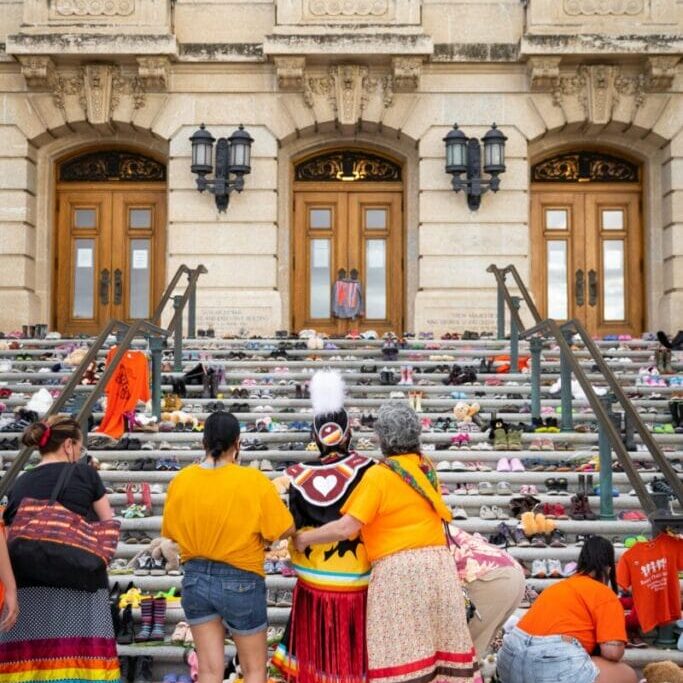
The consequences of the Indian Act
The Indian registration process in Canada
As an Indigenous person, I cannot say my ideological and political positions would reflect any of the popular colonial positions in Canada. I do not have a preferred political party, as I try to refrain from Canadian politics — however, I do see myself as having ideologies. I value the relationships I have built in my community and other Indigenous communities, along with the lands and all living beings that are part of it.
The Indian Act harms these relationships as it continues to control the Indian registration process in Canada, causing negative generational impacts to Indigenous people in Canada today.
Status
Although the Indian Act was created almost 150 years ago, it is still prevalent in First Nations communities across Canada, as the government continues to maintain power and determine who is a status Indian and who is not. Those who do not meet the second-generation cut-off are denied Indian status along with any rights and support services that come with being a registered status Indian. These paternalistic operations continue to harm Indigenous people in many ways.
The way in which the Government of Canada determines eligibility of Indian status is broken down into two categories, 6(1) and 6(2) status. When an individual is registered as a 6(1) Indian, this classification indicates the individual is considered to have two parents of unmixed Indian ancestry. If a 6(1) status Indian has children with a non-status Indian or a non-Indigenous person, their child will be classified as having 6(2) status.
Unfortunately, the Indian registration process has created complex issues for Indigenous people, as those who have 6(2) status are considered to be half Indigenous. The disqualification of Indian status occurs when a 6(2) status Indian has a child with a non-status Indian or non-Indigenous person. Consequently, their child will be born without Indian status, creating further impacts on their future and well-being.
The consequences
By consequence of Section 5 of the Indian Act, a non-status Indian cannot acquire or own land on reserve, as it is set aside for registered band members. Section 20 of the Indian Act mentions how possession of lands on reserves must be transferred to the band or another band member. This process excludes all individuals who were denied Indian status from owning traditional lands on reserve, where they most likely grew up and lived with their family.
Additional exclusions include non-status Indians being denied benefit coverage such as education funding, social assistance and healthcare benefits covered by Non-Insured Health Benefits (NIHB). In order to be eligible for NIHB, a person must be a Canadian resident who is registered as a status Indian.
All of these factors have a significant impact on the mental health and well-being of those who do not qualify to be registered as a status Indian, as they may not be able to afford the costs associated with additional healthcare requirements, education costs and extended social assistance benefits they may need.
Reflecting the needs and beliefs of Indigenous people
The Indian Act must be amended to reflect the needs of Indigenous people in Canada rather than promoting their assimilation, which was the original intent of the Indian Act. The first step in this process should be to amend Section 5 and Section 20 to ensure that Indian registration lands and traditional lands be managed by their respective Indigenous communities through the creation of policies approved and adopted by those communities.
The worsening effects of climate change add another layer of urgency to this need. The land must be taken care of through sustainable practices and the safeguarding of ecosystems, which Indigenous communities have been urging. The knowledge of Indigenous communities can lead us to climate solutions — but only if they are listened to.
Colonization and the land
Prior to colonialism, Mi’kmaq people viewed lands through concepts like Netukulimk, which expresses a mutual caring relationship between human beings and resources. Through colonization, the settlers recognized opportunities to exploit the land for their own monetary benefit. They viewed land as a commodity and determined the best way for them to acquire it would be to create policies such as the Indian Act, as it would restrict Indigenous people from owning land. Colonialism turned what was once a mutual relationship with the land into a commodity.
Netukulimk is more than just conservation. The concepts can also be beneficial to social work by reconnecting community members to their lands which the Indian Act tried to take away, and to heal in a holistic manner. I feel I embody many of the values that come from Netukulimk, as I have a respect for the land and only take from it what I need.
As a country, we must have a mutual understanding when it comes to taking care of the land, otherwise the valuable resources we have today will disappear, and soon.






